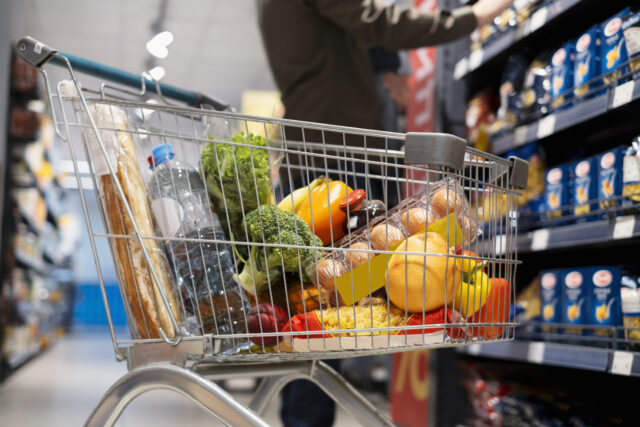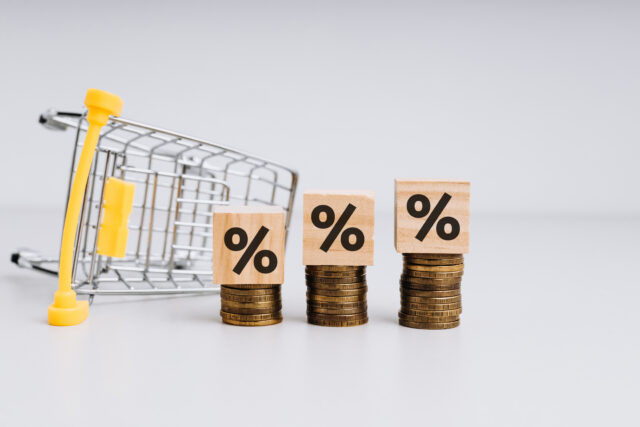In today's business reality, the term "value chain" is common for most companies engaged in manufacturing goods.
Currently, due to the globalization of activities and the increased need for companies to connect in order to deliver products to consumers, developing an efficient value chain is not just an advantage, but a necessity.
In this context, aligning different agents operating in distinct production stages, exchanging information, organizing logistical flows, and forming partnerships capable of delivering what the consumer needs, at the right place and time, has become a major challenge for industries.
Understanding what a value chain is, is of great importance to see the process of goods development as a whole.
Moreover, understanding where your company stands within the value chain can benefit your business.
This text will cover topics such as what the value chain is, the differences between it and the supply chain, and the importance of its management.
What is a Value Chain?
A value chain is the process of transforming raw materials into finished products.
Every value chain has its operational phases, which occur sequentially — these stages range from raw material extraction to the distribution of the product to consumers.
A value chain can pertain to any type of product — both consumer goods and production goods.
Although the concept is simple, in practice, value chains can be extremely complex and extensive.
Today, due to technological advancements and the breaking down of many physical barriers, numerous business units form value chains. These units are spread across different parts of the world but integrate and synchronize in a highly efficient manner.
Currently, numerous agents are involved in the value chain, depending on the type of goods being manufactured.
For example, items like smartphones and computers, which have many components, depend on various suppliers, lengthy supply chains, and a massive logistical effort to deliver the finished product to the consumer.
In order for everything to flow smoothly and meet customer interests and needs, companies need to be in constant communication, sharing data and information capable of maintaining an efficient value chain.
To achieve this, certain practices can make a difference, as we will see ahead.
Examples of Value Chains
-
Milk: the milk value chain is formed by a set of actors that interact with each other, consisting of 4 stages which we will see below.
- In this chain, it starts with input production, involving companies that manufacture raw materials, equipment, credit, services, and research.
- The next link in this value chain pertains to milk production itself, involving producers, animals, genetic development, product quality, and pricing.
- The industry represents the third link in this chain, including companies that process raw materials, as well as those responsible for logistics in milk collection and distribution of processed products.
- The final link in the milk value chain is the consumer, who purchases milk-derived products.
-
Chocolat: the chocolate value chain is basically composed of 5 stages.
- The first is the pre-processing of the fruit, which includes harvesting and opening it, removing the seeds, extracting the pulp, fermenting the seeds, drying, and storing the almonds. All these stages occur on the farm.
- After the pre-processing stages of the fruit, the almonds are sent to chocolate-producing industries. They undergo a classification process, similar to coffee production. These classifications are based on fermentation and influence the flavor and quality of the chocolate produced.
- Following classification, the almonds undergo the roasting process. This process depends greatly on the characteristics the chocolate producer seeks in their product.
- After roasting, the cocoa bean shell is removed, leaving the inner part called cocoa nibs. The nibs then undergo a grinding process to obtain cocoa mass. This cocoa mass is essentially 100% cocoa chocolate. Various chocolate recipes are formulated from the cocoa mass.
- Finally, the chocolate is distributed and reaches the end consumer.
-
Soybeans: soybeans have a straightforward value chain and can be turned into various products.
- The first stage of the soybean value chain is inputs, which involves acquiring necessary items to begin production, such as fertilizers and seeds. This stage relates to companies that supply raw materials for grain production, known as input distributors.
- Once the inputs are ready and acquired, the next step is to use the material for commodities, whether for livestock or agricultural purposes. Production involves creating products that use soybeans as a raw material, whether for cereals, meats, oils, fuels, beauty products, or any other items where soybeans can be used.
- During this stage, industries play a significant role. Once commodities are established, soybeans are transformed into their respective products in each segment they are employed.
- With the product ready, the next stage is distribution in the market so that it reaches the end consumer.
-
Agribusiness: the agribusiness chain consists of 5 stages.
- The first stage of the chain involves companies supplying inputs to farms. These include items such as seeds, fertilizer, limestone, animal feed, machinery, technology, among others.
- Production uses these inputs to generate commodities through cultivation. This applies to products such as timber, grains, oilseeds, meat, milk, etc.
- Among the most crucial stages of agribusiness is processing. This is the final transformation of products for consumption. It is essential at this stage to select the best items to ensure product quality.
- Once products are ready, they move to wholesalers/distributors and then to retailers, where they are sold.
- The final stage of agribusiness value chains is when the product reaches the end consumer.
4 ways to enhance your company's Value Chain

1. Setting goals to be achieved by the business
Enhancing the quality of the value chain is essential, and this can be achieved by defining clear goals for the business.
Más que simplemente tener en cuenta la necesidad de mejorar las operaciones o aumentar los ingresos, su empresa necesita saber exactamente qué se debe mejorar y cuándo se debe hacer.
One way to do this is by adopting the Supply.Digital tool from Implanta para su equipo de compras. Un software online, integrado con el ERP que proporciona la visibilidad y transparencia necesaria para que los usuarios obtengan información actualizada de los pedidos sin afectar las actividades del sector de compras.
2. Technical knowledge of the process
As we know, transforming raw materials into consumer goods, depending on the type of product, can involve a lengthy value chain.
In this sense, each company should be aware of how its chain operates, its stages, the parties involved, and how each of these variables relates to the business model, market demands, and competitive positioning.
In other words, having technical knowledge about your value chain is a significant advantage for companies aiming to be even more competitive.
3. Data-driven management
With increasingly extensive and complex value chains, managing these activities has become broader within companies.
Today, it's practically impossible to monitor and manage all processes without tools that enhance visibility.
In this sense, planning based on data becomes an indispensable strategy for managers and leaders.
Thus, with the support of software, collecting data, tracking indicators, it becomes less complex and risky to plan operations and understand their results.
4. Investments in technology
And of course, one cannot discuss best practices in the value chain without mentioning the importance of technology for the effective execution of processes.
Currently, specialized systems can automate supply chain management, synchronizing manufacturers, retailers, distributors, financial institutions, and government agencies according to consumer demand.
Smart solutions — such as Implanta's Distribution Visibility — integrate information systems, provide data and visibility so that different stakeholders in the same value chain can understand demands, adjust activities quickly, and ensure the delivery of the right product at the right time and price.
Implanta's Distribution Visibility platform captures data directly from distributors' ERPs and delivers reports with optimal inventory levels, product seasonality, price auditing, sell out information, and much more. This allows the industry to gain better visibility of its products in the Supply Chain and increase sales.
What is the difference between Value Chain and Supply Chain?
Although different, both are responsible for delivering a quality product promptly to the end consumer. However, it is important to evaluate distinctions so that managers can make better decisions and know how to act in the market.
The value chain, encompassing the entire process of extraction, transformation, and distribution, involves multiple companies throughout its course.
Therefore, it is broader, covering various stages and segments, and does not necessarily have a central authority.
On the other hand, the supply chain is part of the value chain.
It involves a central company that coordinates activities and sectors, overseeing integration and ensuring smooth operation of all processes.
Thus, the supply chain is a process within a specific company, all within the total framework of all companies that the value chain has during its operation.
The importance of managing the Value Chain
As observed, a series of technical operations are responsible for transforming raw materials into finished products, constituting the value chain.
Subsequently, it encompasses distribution and commercialization in a sequence of operations.
Therefore, regardless of size or sector, all industries undergo this process. However, it is crucial that every stage is executed with utmost quality.
Considering that product quality and pricing depend on each stage, the better we manage these stages, the better the product.
Además, las cadenas productivas tienen el poder de mover la economía nacional, ya que generan empleos y garantizan el abastecimiento del país.
Thus, efficient management of value chains is of utmost importance, both at the enterprise level and at the national level.
And Implanta can assist you with this! Monitor data such as sell-out, market potential, channel customer data, product batch traceability, and stock positions at your distributors or retailers with the Distribution Visibility tool.
With Implanta, you ensure efficient inventory management, regular data updates with 99.8% accuracy, and improved sell-out results.
Click here to speak with one of our specialists.









